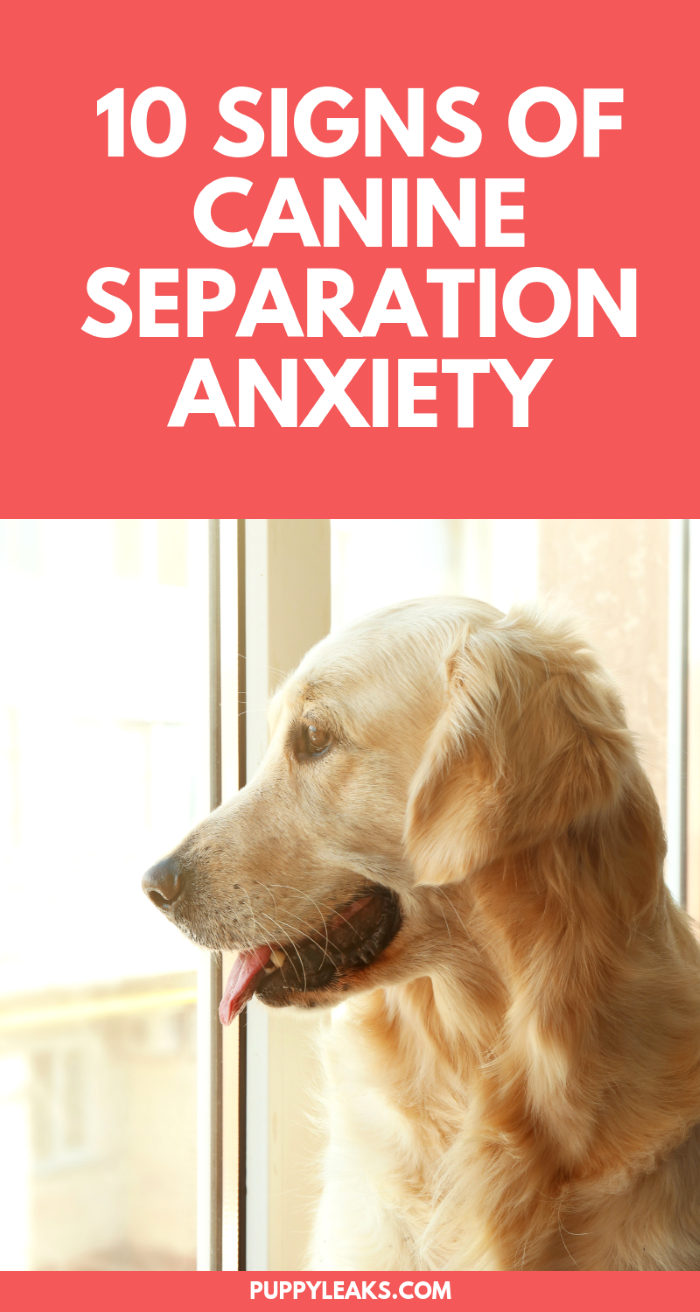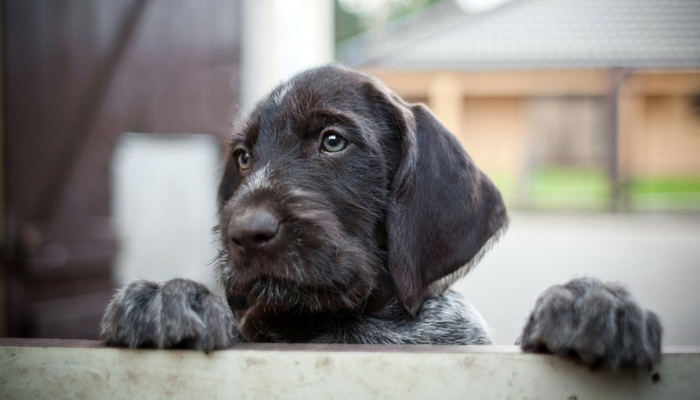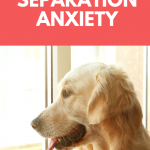10 Symptoms of Separation Anxiety in Dogs
Separation anxiety is a common behavioral issue in dogs, and positively identifying the issue is the first step you need to take when it comes to managing it. Below we’ll go over the common symptoms of separation anxiety, and some resources to help you manage it.
From excessive barking when you’re away to overly excited greetings at the door, here’s 10 common symptoms of separation anxiety in dogs.
And before we begin it’s important to know you’re not alone, and it’s not necessarily caused by something you did wrong, nearly 80% of dogs find it stressful to be left alone.
Barking & Howling
One of the most obvious signs of canine separation anxiety is a dog that barks or howls when you leave. They may sit at the window and howl, or they may bark while left in their crate. The one thing this kind of barking has in common is that it’s persistent and directly triggered by being left alone.
Pacing
Pacing is another common symptom of canine separation anxiety. Some dogs may pace back and forth near the door, while others may pace in specific patterns throughout the house. If it’s being caused by separation anxiety the behavior is only present when their owner is gone.
Urinating & Defecating
Some dogs will have accidents in the house when stressed out, and this includes anxiety caused by being alone. If your dog is potty trained and only seems to have accidents when you’re away it’s likely directly due to separation anxiety.
Salivating & Panting
Extra salivating and panting can be signs of nervousness and anxiety, and some dogs with separation anxiety will exhibit these behaviors.
Restlessness When Left Alone
A general restlessness when you leave is another sign your dog have separation anxiety. If they’re constantly getting up, checking the windows, and seemingly unable to relax or nap chances are they’re anxious.
Trying to Escape
In severe cases of separation anxiety dogs will try to escape from wherever they’re confined to, whether that’s their crate or the house itself. They may chew through doors or potentially break windows, which can result in serious injuries.
Destructive Behaviors (Chewing & Digging)
When left alone some dogs exhibit destructive behaviors, such as chewing on furniture or the walls. If they only engage in these sort of behaviors when left alone it’s likely due to separation anxiety.
Clingy Behavior
If your dog refuses to leave your side when you come home they might have separation anxiety. Now a clingy dog isn’t always one with separation anxiety, but if your dog only sticks right by your side after you come home it’s likely because they’re still trying to get over the anxiety they felt when you were gone.
Nervousness and/or Excitement When You’re Leaving
Dogs are smart, and they know our routines just as well as us. If your dog starts to get nervous in the morning when you’re getting ready for work they’re exhibiting signs of separation anxiety. That ritual of getting ready is causing them anxiety since they know they’re going to be left alone.
Overly Excited Greetings When You Get Home
We all love coming home to a happy dog, but overly excited greetings can be a slight cause for concern. If your dog gets so excited they pee, or if they can’t contain themselves and start to tremble when you come back home they might have separation anxiety.
What to Do If Your Dog Has Separation Anxiety
Now that we’ve covered the symptoms of separation anxiety it’s time to come up with a management plan.
Unfortunately it won’t be cured overnight and it’s not something your dog will just outgrow with time, but there are some simple steps you can to do help manage the behavior (as long as it’s not a severe case such as escaping through windows, at which point you should reach out to a trainer for help).
I’ve written an entire article about how to manage your dog’s separation anxiety, but here’s the TLDR version to help get you started;
- Step 1: Keep your dog calm as you get ready. If you know brushing your teeth starts to get them riled up give them a treat while you brush to try and turn that part of your routine into a positive one for them.
- Step 2: Get your dog used to you leaving. Leave for short periods of time to get your dog used to you leaving, rather than them just stressing about you only leaving for 8+ hours at a time.
- Step 3: Give your dog something to do when you leave. Frozen kongs (a toy filled with frozen dog treats) is my favorite for this; it gives your dog something fun and productive to do, and since it’s drozen it should last a good while.
- Step 4: Teach your dog independent behaviors. By encouraging your dog to do things on their own at a distance from you, you can teach them that they don’t have to be right at your side to be comfortable.
- Step 5: Keep your dog physically & mentally exercised. If you keep your dog physically and mentally exercised each day they’re much more likely to remain calm and well behaved when you’re away. There’s plenty of ways to keep your dog busy indoors, and some ways to help tire them out.
More Resources For Managing Separation Anxiety
Unfortunately there is no magic overnight cure for separation anxiety, but over time if you stick with these methods it can be managed.
- Separation Anxiety – ASPCA
- Separation Anxiety in Dogs – VCA
- Helping Dog Anxiety – Humane Society of the United States

Please share with your friends


My puppy has separation disorder very pad. He is a shih-poo. ( a cross between the Shih Tzu and Toy Poodle). He gets all sad when we have to leave the house and can’t take him. He would sit in the window and destroy our blinds. we have to pull up the blinds, when leaving the house. He’s got better with it now after getting a little older, and a sturdier blind were put up after he destroyed a few. We leave a piece of our clothing on the couch and he lays near it. Thanks for sharing, it reminds me of our dog.